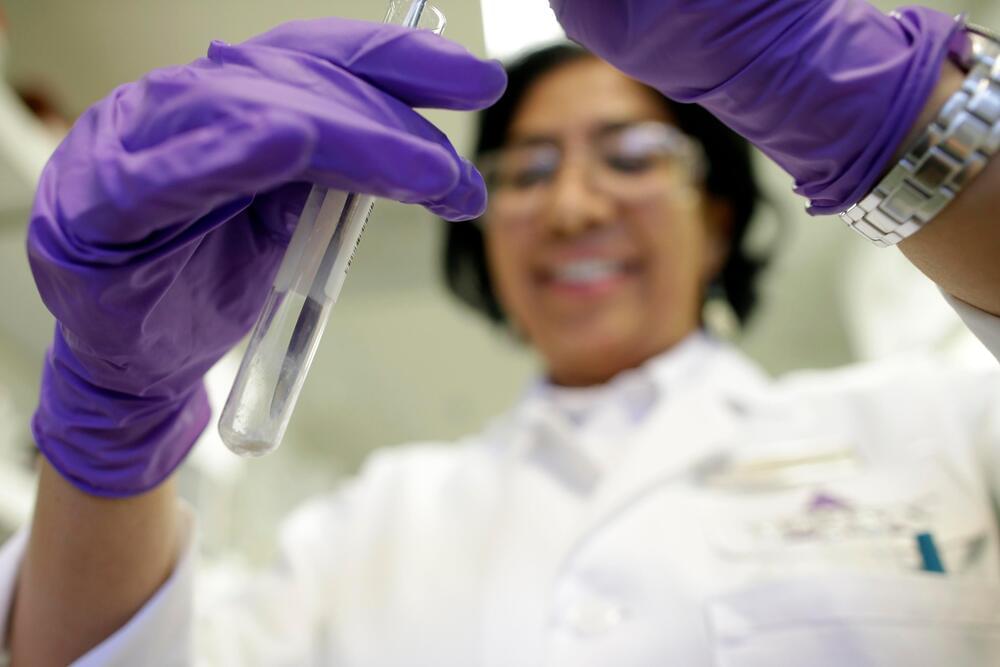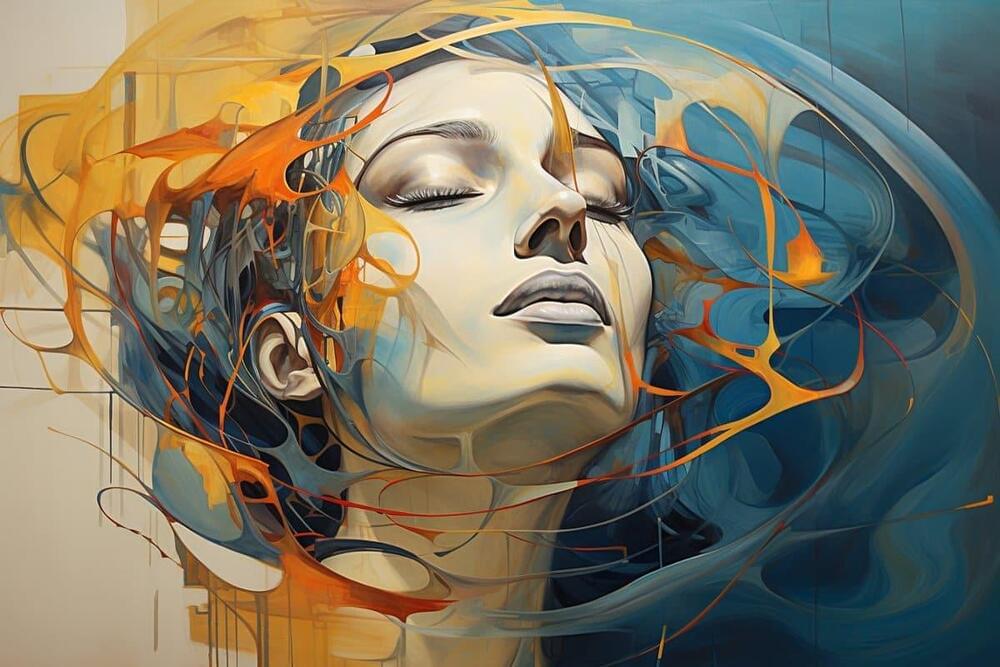In a world first, regulators in the U.K. approved Crispr’s gene-editing treatment for two blood diseases on Thursday, and CRSP stock surged.




The one-time treatment helped relieve symptoms of disease and could free patients from the need for bone marrow transplants or regular blood transfusions, Beach said, adding that the drug hopefully offers a permanent fix for the condition.
The MHRA said it identified no significant safety concerns during the trials and will continue to closely monitor Casgevy’s safety after approval.
Vertex CEO and President Reshma Kewalramanit celebrated Casgevy’s approval as “a historic day in science and medicine” and Samarth Kulkarni, CEO and Chairman of Crispr Therapeutics, said it will hopefully mark “the first of many applications of this Nobel Prize winning technology to benefit eligible patients with serious diseases.” The two companies are hoping for similarly positive decisions from the MHRA’s counterparts in the Europe Union and the U.S., which are in the process of evaluating Casgevy, also known as exa-cel. The Food and Drug Administration is expected to make a decision in early December and has a deadline of December 8. The agency appears poised to follow the MHRA and approve the treatment, with its advisors confident of the drug’s efficacy and benefit but wary of theoretical unintended consequences of genetic modifications.

Summary: Researchers made a breakthrough in memory research by genetically modifying the LIMK1 protein, crucial for memory, to be controlled by the drug rapamycin.
This study demonstrates the ability to enhance memory functions by manipulating synaptic plasticity in the brain.
The engineered protein showed significant memory improvement in animal models with age-related cognitive decline, offering potential for innovative treatments for neuropsychiatric diseases like dementia. This ‘chemogenetic’ approach, blending genetics and chemistry, opens new avenues in neurological research and therapy.
Join us on Patreon! https://www.patreon.com/MichaelLustgartenPhD
Discount Links:
Epigenetic, Telomere Testing: https://trudiagnostic.com/?irclickid=U-s3Ii2r7xyIU-LSYLyQdQ6…M0&irgwc=1
Use Code: CONQUERAGING
NAD+ Quantification: https://www.jinfiniti.com/product/intracellular-nad-test/
Use Code: ConquerAging At Checkout.
Oral Microbiome: https://www.bristlehealth.com/?ref=michaellustgarten.
Enter Code: ConquerAging.
At-Home Metabolomics: https://www.iollo.com?ref=michael-lustgarten.
Use Code: CONQUERAGING At Checkout.
At-Home Blood Testing (SiPhox Health): https://getquantify.io/mlustgarten.

Researchers at the Mount Sinai Center for Transformative Disease Modeling have released a groundbreaking study identifying 4,749 key gene clusters, termed “prognostic modules,” that significantly influence the progression of 32 different types of cancer. The study, published in Genome Research, serves as a comprehensive resource and lays the foundation for the development of next-generation cancer treatments and diagnostic markers.
Despite significant progress in cancer research, understanding the disease’s genetic intricacies remains challenging. Previous research often focused on isolated gene functions in specific cancer types.
We aimed to fill this knowledge gap by providing a comprehensive analysis of gene-gene interactions across various forms of cancer.

In an exclusive interview, Peter Hegemann said AI is more dangerous than optogenetics.
Contrary to popular belief, there is very little chance that optogenetics will be used in the future to control the human brain, says Peter Hegemann, a biochemist and biophysicist, in a conversation with Interesting Engineering (IE) at the Hong Kong Laureate Forum 2023.
Optogenetics is a scientific technique that uses light to control and manipulate cells within living tissues, particularly in the brain. It allows researchers to control the activity of specific neurons with high precision, both in terms of location and timing.
Currently, scientists are applying optogenetics in pain therapy, behavioral science, and questions around neurological diseases. It has also shown potential for therapeutic applications, such as in the treatment of neurological disorders.

Colon cancer remains a leading cause of cancer-related deaths, and there has been a rise in the incidence of early-onset colon cancer or colon cancer diagnosed before the age of 50 years old. Early-onset colon cancer has several differences in clinical presentation, as well as histopathology, genetic alteration, and molecular profiling. Early-onset colon cancer can be differentiated into familial type that includes hereditary familial syndrome and sporadic type. Demographic variance also exists in both developing and developed countries. Due to the rising incidence of colon cancer diagnosed in younger age, it is imperative to examine the available evidence regarding the mortality rate of early-onset colon cancer. Colon cancer is affected by numerous modifiable and non-modifiable risk factors.

At Oak Ridge National Laboratory (ORNL), quantum biology, artificial intelligence, and bioengineering have collided to redefine the landscape of CRISPR Cas9 genome editing tools. This multidisciplinary approach, detailed in the journal Nucleic Acids Research, promises to elevate the precision and efficiency of genetic modifications in organisms, particularly microbes, paving the way for enhanced production of renewable fuels and chemicals.
CRISPR is adept at modifying genetic code to enhance an organism’s performance or correct mutations. CRISPR Cas9 requires a guide RNA (gRNA) to direct the enzyme to its target site to perform these modifications. However, existing computational models for predicting effective guide RNAs in CRISPR tools have shown limited efficiency when applied to microbes. ORNL’s Synthetic Biology group, led by Carrie Eckert, observed these disparities and set out to bridge the gap.
“A lot of the CRISPR tools have been developed for mammalian cells, fruit flies, or other model species. Few have been geared towards microbes where the chromosomal structures and sizes are very different,” explained Eckert.

A pair of studies from the laboratory of Evangelos Kiskinis, Ph.D., associate professor in the Ken and Ruth Davee Department of Neurology’s Division of Neuromuscular Disease and of Neuroscience, have uncovered novel cellular mechanisms that are involved in two types of genetic amyotrophic lateral sclerosis, or ALS.
The findings, published in Science Advances and Cell Reports, improve the understanding of ALS, a progressive neurodegenerative disease that attacks motor neurons in the brain and spinal cord, and provides support for the future development of targeted therapies.
An estimated 32,000 individuals are currently living with ALS in the U.S., according to the Les Turner ALS Foundation. There are two types of ALS: sporadic (non-genetic), which makes up more than 90% of all ALS cases, and familial (genetic).